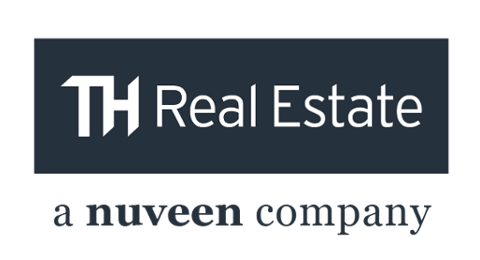Driving Energy Efficiency through Building Management
05 December 2018Driving Energy Efficiency through Building Management
05 December 2018TH Real Estate and Lambert Smith Hampton have successfully piloted, refined and rolled out a new energy monitoring solution, on behalf of Janus Henderson UK Property PAIF. 4D Monitoring’s low-cost sensors feed building and energy data to an online portal, where it can be interrogated by facilities teams and engineers to improve building performance for everyone.
Key Facts
- Up to 36% energy reductions
- Up to £18,000 cost savings per building
- More than 48 tonnes annual CO2e savings
- Exciting potential to enhance wellbeing
Situation
TH Real Estate aims to reduce the energy intensity of its global equity portfolio by 30% by the year 2030, versus 2015. One of the largest real estate investment managers in the world, TH Real Estate has asked its property management partners to identify efficiency opportunities. Lambert Smith Hampton (LSH) is rising to the challenge.
LSH has been collecting energy consumption data for TH Real Estate for several years, providing high level reporting and identifying energy saving investment opportunities. However, this data was insufficiently detailed and timely to inform day-to-day facilities management.
LSH had previously considered energy management systems but found that the cost was prohibitive, the installation process timely, and the systems themselves inflexible as regards what information could be received. To deliver value for TH Real Estate and its occupiers, LSH was looking for a cost-effective solution to energy monitoring that could be applied across different asset types and was aimed at Property Managers.
Actions
In September 2017, LSH partnered with its helpdesk provider, Elogbooks, to pilot a new energy monitoring solution, 4D Monitoring, supported by TH Real Estate. 4D Monitoring retrofits sensors to key plant and building areas to enable any building to be a smart building. Sensor data is then fed to an online portal, where it can be interrogated to identify where energy wastage is occurring and where optimisation opportunities exist. 24/7 monitoring and customised auto alerts also highlight equipment faults early on.
After trialling the system in two buildings, LSH expanded the pilot to 27 buildings, ranging from 600m2 to 5,000m2 and including properties constructed in the 1980s through to new build. Over the first three months, the team installed 400 sensors to monitor temperatures, pressures, flow rates, energy consumption and plant run times. The portfolio of sensors continues to be expanded, with a total of 800 sensors installed over the year.
LSH gains value from the system from the moment that the sensors are installed, with facilities teams and engineers interrogating live performance data to establish where plant is operating inefficiently. This would be challenging to do using meter readings, monthly service inspections and closed protocol Building Management Systems.
In the first month, 4D Monitoring identified 49 opportunities to optimise equipment run times across the 27 buildings. LSH then mobilised contractors to make the recommended adjustments. In one building, incremental adjustments to run times and set points reduced chiller and boiler operation by 32% and air handling units (AHUs) by 35% within a week. The programme has now been expanded to 35 buildings and LSH is exploring opportunities in additional office buildings, as well as retail parks and shopping centres. Over 2018, it achieved a total reduction of 137,690 kWh in three buildings alone, which equates to 48 tonnes of CO2e.
Financials
- £2,000 average installation cost per building, including sensors, funded through occupier service charges.
- £1,000 average annual running cost per building.
- £2,500 - £18,000 typical cost savings per building, reducing service charges.
- Payback within six to 12 months.
Benefits
- Up to 36% energy savings.
- A reduction of 48 tonnes of CO2e or 137,690 kWh in three buildings.
- More effective property management, including fixing faults more quickly, before occupiers are affected.
- Contributing to TH Real Estate’s energy intensity reduction target.
- Exciting potential to support wellbeing initiatives for people in the buildings.
- Informing targets for Property Managers, Facilities Managers and Mechanical and Electrical (M&E) contractors.
- Strengthening contractor relationships and assessing their performance.
- Cost-effective solution for different types and sizes of building.
Challenges and Achievements
CONTRACTORS
How to bring M&E contractors on board?
4D Monitoring gives contractors the ability to implement change quickly, by providing greater visibility of site activity. The system drives contractor engagement by providing proactive reports that alert engineers to issues on the ground. During the set-up process, LSH and 4D Monitoring held local onboarding sessions for M&E contractors, to give them an overview of the system and the benefits it can bring. Each contractor then sent three to four members for a technical training day at 4D Monitoring’s HQ, to ensure they were equipped with the knowledge to install and set up the solution across all 35 buildings. In each building, the M&E contractor is now working collaboratively with the Facilities Manager, Property Manager and 4D Monitoring to improve building performance.
ONGOING
How to maintain efficiency gains?
Facilities teams monitor whether equipment performance is showing as green (good), amber (review) or red (urgent investigation) on the portal. The system is designed to give facilities teams live visibility of a building’s performance data, so they can respond to issues as they arise and monitor the proficiency of contactor activities. Facilities teams also receive customised auto alerts that highlight equipment faults and other opportunities. For instance, air flow sensors on air filters trigger alerts when filters need to be changed, rather than this being done on a standard planned preventative maintenance schedule. 4D Monitoring produces quarterly reports by property, highlighting areas to investigate. 4D Monitoring discusses these reports at quarterly meetings held with the relevant M&E contractors, Property Managers and Facilities Managers.
*Please note that the information on this page was supplied by the BBP Member and the BBP assumes no responsibility or liability for any errors or omissions in the content


